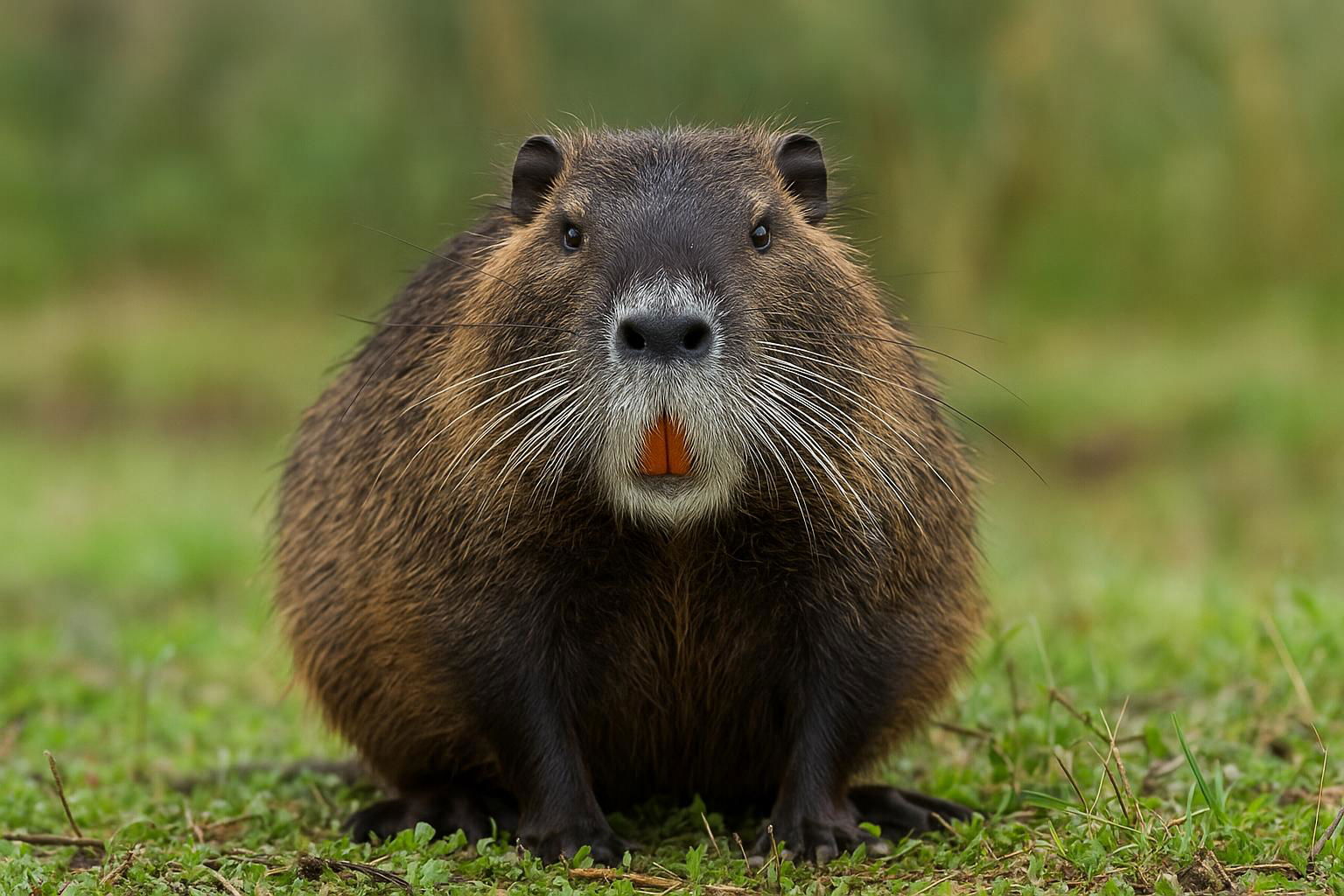
Nutria
Myocastor coypus
The nutria, or Myocastor coypus, is a large, semi-aquatic rodent native to South America but now found in various regions around the world due to extensive introduction. Recognizable by its robust, muskrat-like appearance, it typically measures between 40 to 60 cm in body length, with a tail adding an additional 30 to 45 cm. Nutrias have coarse, brownish fur overlaying a contrasting layer of soft, dense underfur, sometimes harvested commercially as "coypu skin." They possess large, orange incisors adapted for gnawing aquatic vegetation, their primary food source, which they skillfully forage for with their partially webbed hind feet.
Often residing in burrows along riverbanks, lakeshores, and wetlands, these social mammals form colonies where they exhibit complex burrowing behavior. While their ecological impact is notable in terms of altering wetland ecosystems and competing with native species, nutrias have also become of concern due to their burrowing activities that can compromise levee and dike integrity. Exhibiting a high reproductive rate, they can pose significant challenges in non-native regions, contributing to their status as an invasive species. Despite this, their curious nature and the adaptability of the nutria interestingly illustrate the dynamics of ecological displacement and environmental adaptation.

 All Species & Breeds
All Species & Breeds
 Highland Cattle
Highland Cattle
 Miniature Donkeys
Miniature Donkeys
 All Species Directory
All Species Directory
 Highland Cattle in Virginia
Highland Cattle in Virginia
 Miniature Donkeys in Texas
Miniature Donkeys in Texas












